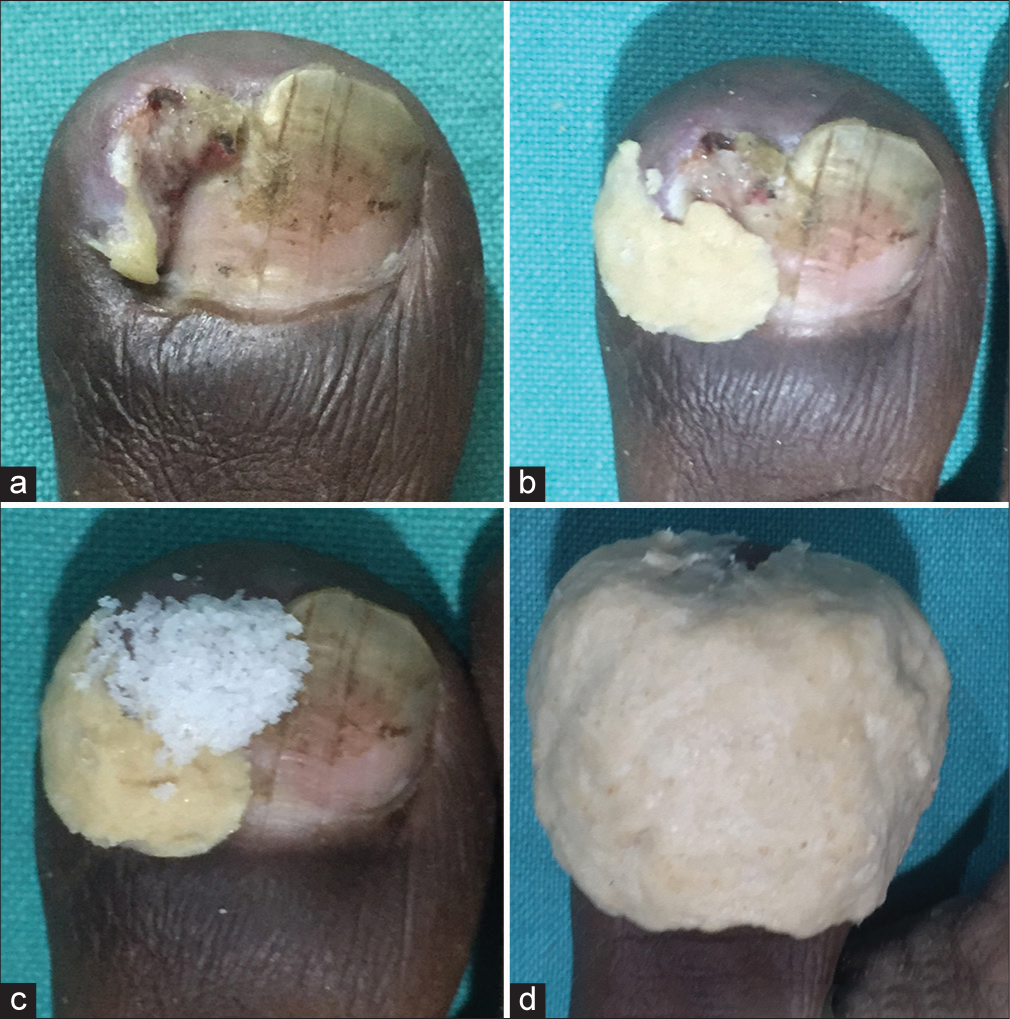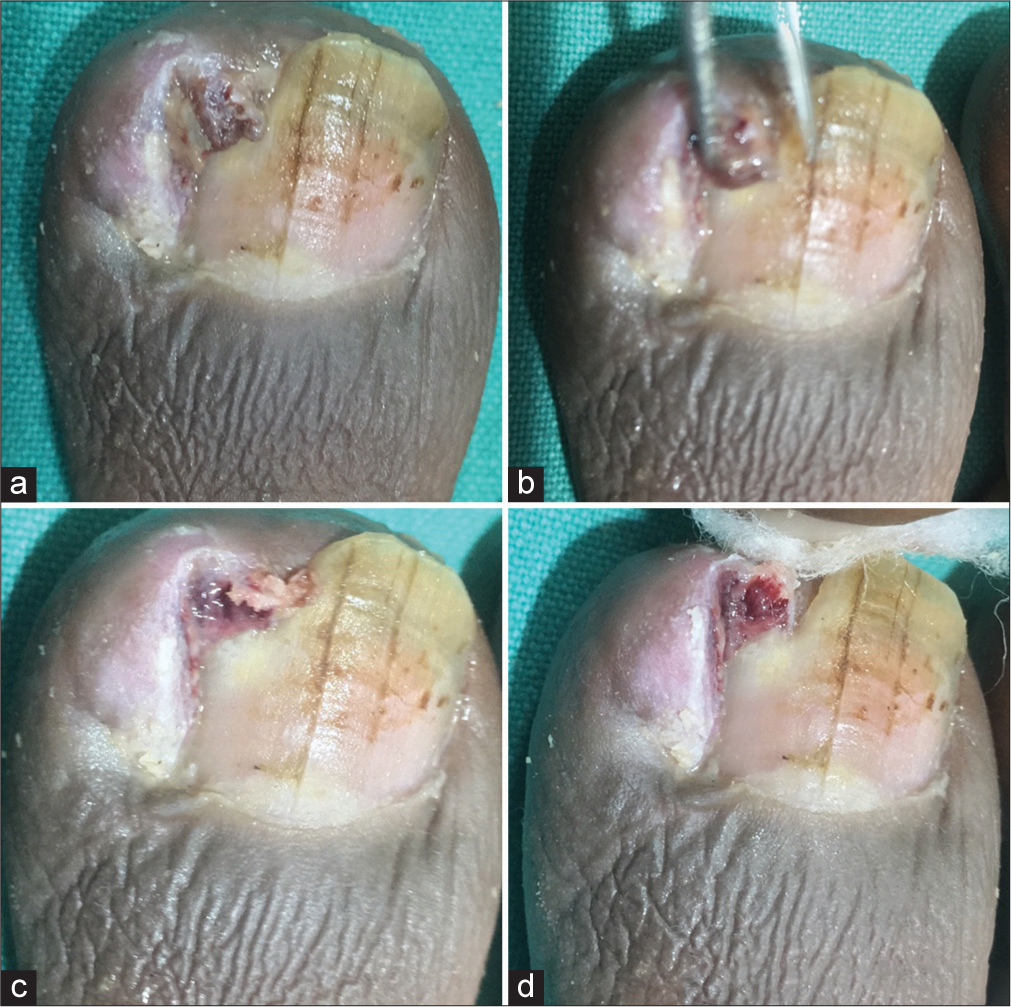Translate this page into:
A novel use of table salt and wheat flour dough for treating pseudopyogenic granuloma

*Corresponding author: Muhammed Mukhtar, Department of Dermatology, Mukhtar Skin Centre, Katihar, Bihar, India. drmmukhtar20@gmail.com
-
Received: ,
Accepted: ,
How to cite this article: Mukhtar M, Mukhtar M. A novel use of table salt and wheat flour dough for treating pseudopyogenic granuloma. CosmoDerma. 2024;4:92. doi: 10.25259/CSDM_97_2024
PROBLEM
Ingrown toenails are commonly accompanied by pseudopyogenic granulomas, which necessitate surgical intervention. However, the granuloma often persists and requires treatment with radiofrequency, cryotherapy, and a caustic agent. These facilities are not practical in remote area clinics, especially in weekly to monthly satellite clinics.
SOLUTION
To treat this granuloma, we used table salt as an antimicrobial, dehydrating, and sclerosing agent, which is widely available in most homes. Wheat flour dough is especially sticky and elastic due to the presence of gluten protein. When flour is mixed with water, the gluten absorbs the liquid and produces a continuous sticky elastic network. It is prepared by mixing a small amount of flour with a small amount of hot water to moisten it as needed. Making it in hot water necessitates some aseptic procedures. Under aseptic preparation, a pinch of the salt is put over the granuloma’s lesion, and the site is sealed with flour dough [Figure 1]. After this, this patient is followed up weekly, and the dressing is changed. After one week, the lesion faded and was easily removed with forceps, which was resolved within 3–4 weeks [Figure 2]. Thus, table salt is a good and cost-effective option to treat pseudopyogenic granuloma. This technique can be used to treat pyogenic granulomas on different parts of body. It does not require any further dressing. It must be protected from water, especially the hands and feet, until it has dried. Flour dough has been used to treat minor burns. Furthermore, placing table salt and covering it with a general dressing is ineffective since the salt must be protected from water or excessive moisture. When the salt comes into contact with more water or moisture, the hypertonic solution leaks out, rendering it ineffective and necessitating frequent application. To retain its hypertonicity and antibacterial properties over time, it should be gradually dissolved.

- (a-d) The different stages of the procedure of table salt and wheat flour dough application over pyogenic granuloma.

- (a-d) The different stages of granuloma: Faded, shrunken, and easily removed with forceps and gauze piece after one week.
Ethical approval
The Institutional Review Board approval is not required.
Declaration of patient consent
The authors certify that they have obtained all appropriate patient consent.
Conflicts of interest
There are no conflicts of interest.
Use of artificial intelligence (AI)-assisted technology for manuscript preparation
The authors confirm that there was no use of artificial intelligence (AI)-assisted technology for assisting in the writing or editing of the manuscript and no images were manipulated using AI.
Financial support and sponsorship
Nil.





